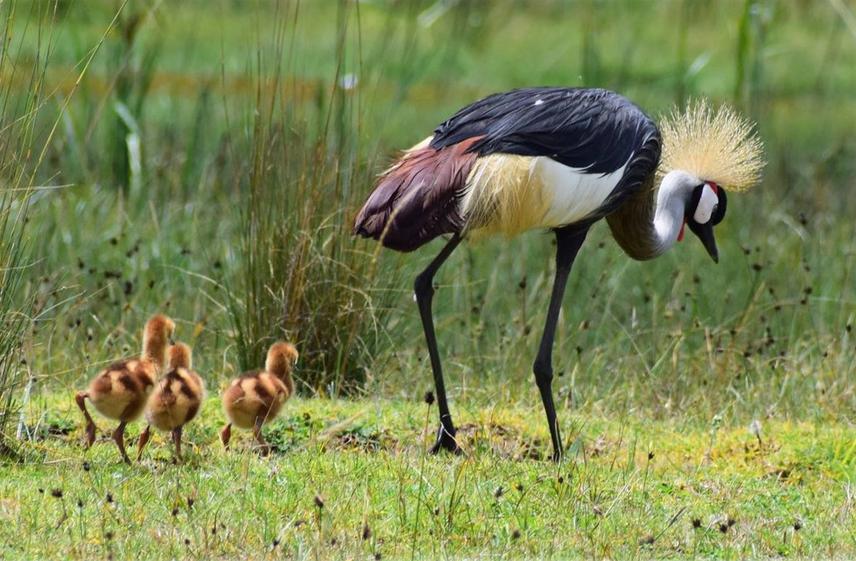David Warui Kirugui
Other projects
4 Mar 2025
Community Engagement in Protection and Restoration of Degraded Lake Ol’ Bolossat’s Satellite Wetlands as Habitats for Grey Crowned Crane
Grey Crowned Crane populations worldwide have declined by 80% in the last 45 years. Lake Ol’Bolossat is a key breeding site for cranes, and it is expected that surrounding wetlands can also play an important role in crane conservation. We don’t know yet how important these satellite wetlands are, but at the same time, they are already disappearing. Hence, based on the success of our work at Lake Ol’Bolossat, we want to survey, monitor and protect these satellite wetlands, working together with local communities and the government. Additionally, to foster ownership, we will involve community surrounding the wetlands in conservation as cranes custodian by training them on communication skills and techniques to apply while raising awareness and also advocate for protection of the wetland by the government for conservation of cranes and biodiversity in general. We are aware that Kenya Wildlife Service as Kenya's most eminent national wildlife conservation agency is committed to provide leadership in wildlife conservation and management, under its strategic plan 2019-2023 intend to reverse and stabilize the declining trends across wildlife population on endangered species. They also intend to win more space for wildlife by strengthening their engagement with communities, partners and stakeholders. In additional, establishment of Kenya Cranes Working Group that is working in developing National single species action plan on conservation of Grey Crowned Crane for the purpose of implementing coordinated measures to restore the population of the species.

We aim to achieve the following objectives at the end of the project:
• After four months twenty satellite wetlands will be mapped and size of Grey Crowned Crane population in the satellite wetlands will be determined.
• After twelve months, the seasonal variation in the use of satellite wetlands by Grey Crowned Crane is determined and roosting site located.
• Within six months’ Critical habitat, especially for breeding and foraging habitat will be established and also breeding activity and breeding success.
• After six months’ potential threats to breeding sites for the species will be established and for six months surrounding community will be involved in conservation of the Grey Crowned Crane.
The overall purpose of the project is to contribute in stabilizing and reversing the declining population trend of Grey Crowned Crane and strengthening conservation and protection of Grey Crowned Crane and its habitat through active local participation at lake Ol’Bolossat, Kenya.